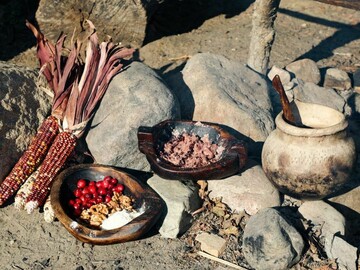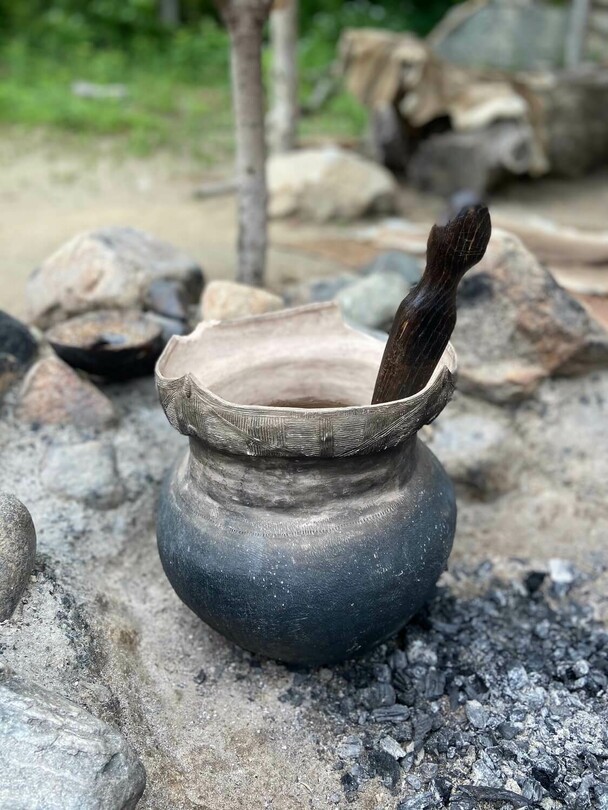Nasaump
- Author/Maker
- Modern recipe developed by Plimoth Patuxet Museums based on traditional Wampanoag foodways knowledge
- Source
- Plimoth Patuxet Museums

Description
Around 1,000 years ago, several strains of flint corn arrived in southeastern New England and drastically altered the Wampanoag diet. A short growing season coupled with changes in the environment, allowed the Indigenous peoples of southeastern New England to cultivate corn in large quantities. Horticulture and gardening joined hunting and gathering as food production techniques. Once they began farming, domesticated plants made up about 70% of the Wampanoag diet, with gathered plants making up about 10% and hunted meats 20%. Planting corn meant the Wampanoag had to move around less for food and could save up a surplus for later in the year.
As Wampanoag people started farming corn, they developed tools and techniques to cultivate it. A hoe like this one would have been hafted to a handle and used to work the earth similarly to modern hoes. In Key to the Language of America, Roger Williams noted:
“the [Naragansett] women set of plant, weed, hill, gather, and burn 1all the corn and fruits of the field. Sometimes a man, (either our of love to his wife or care for his children, or being an old man) will help the woman which (by the custom of the country) they are not obligated to do. When the field is to be broken up, they have a very loving, sociable, and speedy way to complete the task. All the neighbors, men and women, forty, fifty, a hundred or more join and come in to help freely…so it is true with them, as in all the world, in the affairs of Earth or Heaven: through harmony, likee things grow great.”2
Indigenous agriculturalists used several types of hoes for different activities: a stone hoe for breaking up dirt and tearing out stumps, a clamshell hoe for weeding, and deer scapula (shoulder bone) hoe for weeding and general use.
Media
Discussion Questions
-
How are traditional recipes passed down through the generations?
-
Do you eat something similar to nasaump? How did you learn to make it?
-
What do you think a “sky coloured” berry is? Have you ever tried one?
-
What does this recipe tell us about how Wampanoag families ate 400 years ago?
-
How would you compare John Josselyn’s description to the traditional nasaump recipe? Can you put it in your own words?
